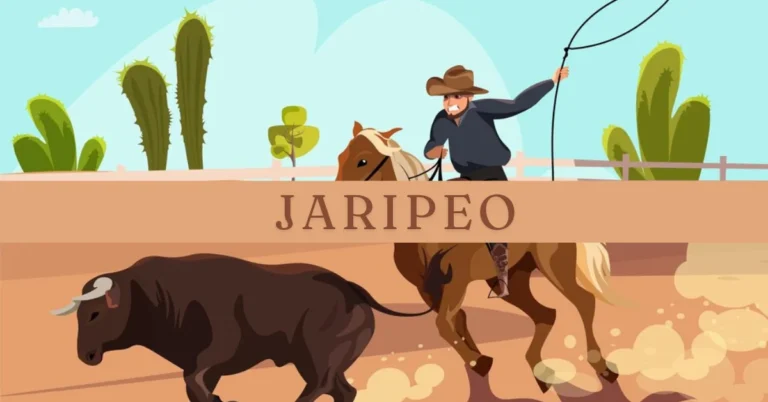Introduction to Jaripeo
Jaripeo is more than just a thrilling spectacle; it’s a vibrant expression of culture and tradition that has captivated audiences for generations. Originating from the heart of Mexico, this dynamic event combines skill, artistry, and raw power as riders take on untamed bulls in an adrenaline-pumping showdown. Each performance tells a story steeped in history while reflecting the evolving spirit of communities across Latin America. As we delve into the fascinating journey of jaripeo, you’ll discover its rich origins, traditional elements, modern transformations, and even the controversies that have surrounded this electrifying sport. Join us as we explore why jaripeo continues to resonate with people around the world!
The Origins of Jaripeo
Jaripeo has deep roots in Mexican culture, tracing back to the colonial period. It emerged as a rural pastime among cowboys and horsemen, evolving from simple cattle-ranching practices.
Originally, it was about showcasing skills in horsemanship and bull riding. Ranchers would gather to compete and demonstrate their prowess. The event also served as a social gathering that strengthened community ties.
Over time, jaripeo incorporated elements of music and dance, adding vibrancy to the experience. Traditional mariachi bands often accompanied these events, enriching the atmosphere with lively rhythms.
The blend of athleticism and artistry made jaripeo not just a sport but a cultural phenomenon. Its historical significance reflects the agricultural lifestyle prevalent in Mexico during those times.
Traditional Elements of Jaripeo
Jaripeo is rich with traditional elements that embody its cultural significance. Central to this spectacle is the skilled horseman, known as a “jaripeo rider,” who showcases his talent in riding and handling bulls. His bravery and finesse captivate audiences.
The arena itself reflects local customs, often adorned with vibrant decorations. Spectators gather around a circular ring, eager for the action. This atmosphere fosters community spirit, as families come together to cheer on their favorite riders.
Music plays an integral role too. Traditional mariachi bands set the tone, blending lively rhythms with heartfelt melodies. These sounds enhance the excitement of each ride while honoring Mexican heritage.
Costumes are also essential in jaripeo events. Riders don colorful attire that represents their roots and pride. Each stitch tells a story of tradition passed down through generations, connecting present-day participants to their ancestors’ legacy.
Evolution of Jaripeo in Modern Times
The evolution of jaripeo in modern times showcases its adaptability and enduring appeal. While rooted in tradition, the sport has embraced new elements to attract younger audiences.
In recent years, events have incorporated vibrant music festivals and dance performances. These additions create a festive atmosphere that extends beyond the ring.
Technology plays a significant role as well. Social media platforms amplify the reach of jaripeo events, allowing fans worldwide to engage with this thrilling spectacle.
Riders now often wear more advanced safety gear, reflecting growing awareness about rider safety without sacrificing excitement.
Moreover, many regions have begun to host international competitions, elevating jaripeo’s status on a global stage. This blend of tradition and innovation keeps the spirit alive while introducing fresh experiences for all involved.
Controversies Surrounding Jaripeo
Jaripeo, while celebrated for its cultural significance, is not without its controversies. Animal rights activists often raise concerns about the treatment of bulls during these events. Critics argue that the spectacle can lead to severe stress and injury for the animals involved.
Additionally, safety issues have surfaced over the years. Riders sometimes face dangerous falls or injuries from unpredictable bull behavior. This has prompted calls for stricter regulations to ensure both human and animal welfare.
The event’s association with alcohol and rowdy crowds also sparks debate. Distracted spectators may contribute to unsafe environments, raising questions about responsible practices at jaripeo gatherings.
Despite these challenges, many supporters emphasize that jaripeo is rooted in tradition and community spirit. They advocate for reforms rather than outright bans, seeking a balance between preserving culture and ensuring ethical treatment of all participants involved.
The Global Reach and Influence of Jaripeo
Jaripeo has transcended its regional roots, captivating audiences worldwide. This traditional Mexican rodeo showcases not just the thrill of bull riding but also cultural expressions through music and dance.
Festivals celebrating jaripeo can now be found in cities across the United States, Canada, and even parts of Europe. These events draw diverse crowds eager to experience authentic Latin culture.
Social media plays a pivotal role in this global expansion. Viral videos featuring daring riders have sparked interest beyond borders, inspiring new fans who appreciate the artistry involved.
Moreover, local communities often embrace jaripeo as a means to connect with their heritage. Many engage in organizing events that reflect their own interpretations while maintaining respect for tradition.
The fusion of modern elements with classic practices ensures jaripeo’s relevance today. As it continues to evolve, its influence remains strong among cultures both familiar and unfamiliar with its origins.
Conclusion: The Enduring Legacy of Jaripeo
Jaripeo has carved out a unique identity that transcends borders and generations. From its humble beginnings in rural Mexico, this traditional sport has evolved into a vibrant celebration of culture, skill, and community spirit. While it maintains deep roots in its origins, Jaripeo continues to adapt to modern influences while preserving essential elements of the past.
The passion surrounding jaripeo speaks volumes about its significance in Mexican heritage. As it captivates audiences around the world, the event brings together people from various backgrounds who share an appreciation for tradition and challenge.
Despite ongoing debates regarding animal welfare and ethical considerations, many enthusiasts argue that jaripeo is more than just a competition; it’s a form of art rooted deeply within cultural expression. The festivities often promote camaraderie among communities while showcasing skilled horsemanship.
As we look ahead at what lies beyond the arena gates, one thing remains clear: jaripeo’s legacy will continue to inspire future generations. It stands as a testament to resilience and adaptability—a mirror reflecting both challenges faced over time and triumphs celebrated throughout history.
FAQs
Q: What is Jaripeo?
Ans: Jaripeo is a traditional form of bull riding primarily practiced in central and southern Mexico, as well as in El Salvador and Guatemala. It involves riders attempting to stay on bucking bulls until the animals tire.
Q: Where did Jaripeo originate?
Ans: Jaripeos originated in the 16th century in Mexico. It developed from a practice where riders would attempt to ride fighting bulls to the death, evolving over time into the modern sport of bull riding.
Q: How has Jaripeo evolved over the centuries?
Ans: Originally, Jaripeos involved riding bulls to the death. Over time, it transformed into a less lethal competition where contestants aim to stay on the bulls until they stop bucking, emphasizing skill and endurance rather than the death of the bull.
Q: Where are Jaripeos traditionally held?
Ans: Jaripeos traditionally take place in lienzo charros (or toriles), which are special arenas for these events. They can also be held in modern arenas, bringing the tradition to contemporary settings.
Q: What is the significance of Jaripeo in the local culture?
Ans: Jaripeo is an important cultural tradition in Mexico and parts of Central America. It reflects historical practices, showcases local horsemanship skills, and serves as a popular entertainment form, deeply embedded in the regional heritage.

